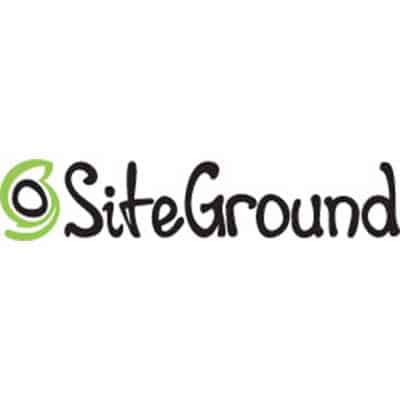You’ve probably heard of many success stories about a blogger who went from nothing to everything. And that can certainly be the case for some. However, as much as 95% of blogs fail for various reasons.
In this article, we’ll explain how to start a blog, tips to monetizing a successful blog, and how to stay motivated after starting. Let's get started!
Is a Blog Right for You?
In order to start a blog, you’ll first need to determine a topic, or niche, for your blog. This should come from something you are passionate about. For me, it’s personal finance and investing. For you, it could be something like woodwork or fashion. There are millions of potential blog topics, the key is finding something you are most passionate about.
Blogging is not a simple task. It takes enormous amounts of time, writing skills, and patience. And if you are lacking in even one of those areas, the chances of owning a successful blog decreases. If you hate to write or create content, blogging might not be the best option for you.

Step 1: Determine Your Topic
Like we mentioned before, picking a blog topic that you are passionate about is one of the most important steps to starting a successful blog. It enables you to write from your own experiences and be more personable with your readers.
Do research
When considering different topics, the first thing you should consider is the audience. Do people want to read content related to your topic? If you have a very small audience, it might be harder to get started than a topic with a large audience. Understand the amount of people who might be searching for your topic beforehand.
What does the competition look like?
Before starting your blog, you should know your competition. Are you attempting to become a blogger in an overcrowded space? You may want to reconsider if so. This doesn’t mean you need to find a topic that has no other competition, you just need to be aware.
Related Reading: Is Blogging Worth It?

Don't worry – we hate spam too. Unsubscribe at any time.
Step 2: Determine the Name of your Blog
The second step of starting a blog is determining the name. It could be something clever, or something random. My advice? Keep it related to your topic so that people will know what type of content they are about to consume. This will also provide SEO value down the road.
Step 3: Create a Website/Branding
The third step in creating a blog is to create your blogs website and branding. For many, this is the most challenging piece of starting a blog because it requires the most technical and design skills. Depending on your circumstance, you could consider hiring someone to complete this step for you or do it yourself. There are many resources available online to help you create your website

Step 4: Create Content
When people think of blogging, they automatically skip to this step. The aforementioned steps are dismissed, hence the reason so many blogs fail.
Writing blog posts and creating content is not something that should be overlooked, however. This step is critical to your blogs ongoing success. High qualify, relevant content is vital for your blogs growth. It should be informative, useful, and creative so that your readers engage and disperse your content.
Writing and creating is also the most time consuming step in crafting a successful blog. You will need to allocate time towards research, organization, writing, and editing your posts to help you churn out quality content. We will outline some of the most important tips for creating quality content below!
Brainstorm
Before you begin writing, you should brainstorm ideas for your content. They should relate to your blogs niche to resonate well with readers. Write different topics and subtopics for each idea.
Research
Research your content ideas to see which pieces might be more useful for readers. SEO (Search Engine Optimization) will be essential to your blogs success so be sure to know what people are searching for.
Outline
After gathering your topics and researching them, outline your post so that you can keep your ideas flowing in a logical order.

Create
After outlining your post, you can being creating your content. Notice how we didn’t say “write”. Content is not just blog posts. It can be video, infographics, and many other things. By using multiple different media formats, you can keep your readers or viewers engaged.
If you’re writing a blog post, try to make sure it is at least 600 words long with preference given to posts longer than 2,000 words.
Step 5: Distribute Content
Once your content is created, you won’t get very far if it isn’t distributed properly. For a blog post, you might publish it to your website. But that won’t maximizer your return. You’ll need to distribute it on other channels like social media or via email.
Share on Social Media
Sharing your content on social media is a great way to attract and audience and keep them engaged. Best of all, it’s completely free. Setup a Facebook, Twitter, and Instagram account to get started, then consider expanding.
You’ll also gain additional SEO value through social media so it’s always important to share your posts!

Step 6: Continue Creating
One blog post isn’t going to yield that results you’re probably looking for. It will take time in order to grow your blog, so keeping your blog fresh should be a priority. Make sure that your blog is updated at minimum once per week with new content. The more quality content that you can create, the better chance your blog has at growing an audience. KEEP CREATING!
Related: How Much Does it Cost to Start a Blog
Step 7: Analyze
After you’ve been publishing new content frequently, you should take a look at your results. Are you getting the traffic you want? Are specific subtopics doing better than others? Use this information to guide your content strategy going forward. If you notice posts on a specific subtopic do much better than others, try adding a few more posts about that topic to your rotation and vise versa.
You can use many different tools to analyze your blogs success. You can monitor website traffic and acquisition through Google Analytics. You can track user behavior through heat mapping tools like Hotjar or Crazy Egg. You can measure your search engine rankings through Google’s Search Console.
Step 8: Diagnose
After analyzing the data, it’s time to diagnose any problems that may be occurring or where you could improve. Were you expecting more traffic than you actually got? If so, it’s time to look at what could be the problem.
I’m not getting enough traffic?
If your traffic is lacking there could be hundreds of potential problems. Some of the most common reasons are:
- Your site is not optimized for SEO
- You aren’t promoting your blog
- You aren’t distributing your content
- Your blog is too new
Step 9: Adapt
After diagnosing any problems your blog might have, it’s time to adapt and make changes to help your blog grow. Whether it’s exploring new content topics or optimizing your websites speed, there are endless amount of optimization strategies you can take advantage of.
Trends are always changing, and so should your content. Hop on the latest trends in order to stay relevant in your niche.
Blog Monetization Strategies
Let’s be honest, when most people start a blog they do it in hopes of one day making money from it. Below we’ll cover some of the most common and most profitable monetization strategies for your blog and how you can boost your income.
Related: Make Money Flipping Websites
Display Advertising
One of the top ways bloggers monetize their content is through display advertising. By using platforms like Google’s AdSense, you can easily ad display ads to your blog. Simply add the code to your website and they’ll start showing up.
You can earn income two ways. The first way is by each person that views your ad. Ad views will not offer much income but given the right amount of traffic, it can ad up. Ad views are measured in CPM, or per one thousand views. We’ve seen CPMs anywhere for $.05 to $.75. This means that for every 1,000 views, you would receive $.05 to $.75.
The second way is for each click on the ad. This will yield significantly larger payments because there is a direct interaction. Ad clicks are measured in CPC, or cost per click. This can vary widely depending on the industry.
👉 Rakuten Insights - Cash out directly to PayPal!
👉 OpinionOutpost - Earn up to $25 per survey!
👉 Survey Junkie - Make $150 for select focus groups you complete!
👉 Swagbucks - Get a $5 bonus instantly!
👉 InboxDollars - Get a $5 bonus when you register today!
👉 Pinecone Research - Earn fast money taking surveys
👉 Survey Voices - Make money taking online surveys
Affiliate Networks
Have you ever been reading through a blog post and notice a link to a product that is mentioned in the post? Chances are, the link is an affiliate link where the publisher gets a small percentage of the income affiliated with their purchase.
You can use affiliate offers in more than just written content however. For example, many successful vloggers will promote products in videos with a specific promo code and get income for each sale they get.
Looking for another way to use affiliate links? You can also promote them in marketing emails or on social media to gain even more income.
eBooks or Gated Content
Another way you can monetize your blog is by providing content that people must pay for. This works well for advanced topics in which people are willing to shell out money to learn more.
How to Grow your Blog
Once your blog is started and you are publishing content regularly, you’ll probably want to grow it. There are many different ways you can grow your blog, we’ll explain the best ways below!
SEO
As we mentioned earlier, SEO is one of the most important ways to grow your blog organically (for free). By targeting specific keywords you can show up in search engine results driving more traffic to your website.
There are many SEO tools you can use to grow your blog. Some of the most common are:
- Moz
- SEMRush
- Ahrefs
Facebook Ads
Promoting your blog on social media can be a great way to increase traffic and engagement. Consider running Facebook Ads that offer a piece of content in exchange for an email address giving you the ability to promote your blog via email marketing.
Email Marketing
As we just mentioned, email marketing can be a great way to increase your blogs traffic. Make sure that readers have a place to subscribe to your email list on your website. Then create an automated email campaign to keep readers coming back.
How to Stay Motivated when Blogging
Starting a blog is extremely challenging, and more than anything it requires copious amounts of time and hard work. After starting a blog you might feel unmotivated if it does not gain traction quickly, this is very common. What’s not common is to keep going. Many bloggers will drop off after the first month if they don’t see results right away. This is what separate successful blogs to unsuccessful ones. By staying motivated and continuing to publish quality content, it’s only a matter of time before your work comes to fruition.
Remember why you started
The most important thing to do when you become unmotivated is to remember why you started. Whether it’s because of a passion or because fo a financial reason, always go back to why you started.
Know that it will take time
If you don’t see results right away (and you won’t), know that this is normal. Consider this as your time to get ahead and push forward, rather than quitting.
Celebrate small victories
It could be one simple click to your website, or your blogs 100th visitor. Either way, you should celebrate these small victories. It will help you to stay on track even when the times get tough.
Final Thoughts on Starting a Blog
Starting a blog is no easy task. You probably know this by now. By following these 9 steps, you’ll improve your chances at developing a successful blog. It will take an enormous amount of time and effort, but with the right tools, anyone can do it.

Don't worry – we hate spam too. Unsubscribe at any time.
